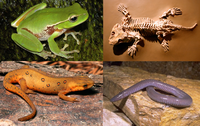
Histological technique to detect the physiological age of the malaria vector mosquito Anopheles pharoensis (Diptera: Culicidae)
Sign Up to like & getrecommendations! Published in 2021 at "Microscopy Research and Technique"
DOI: 10.1002/jemt.24019
Abstract: The risk of malaria recurrence increases due to the main vector, Anopheles pharoensis. The physiological age of the mosquito population is needed to expect malaria vector dynamics. The number of completed gonotrophic cycles is of… read more here.
Keywords: malaria vector; anopheles pharoensis; mosquito; vector ... See more keywords

A novel version of the Von Foerster equation to describe poikilothermic organisms including physiological age and reproduction rate
Sign Up to like & getrecommendations! Published in 2020 at "Ricerche di Matematica"
DOI: 10.1007/s11587-020-00489-6
Abstract: The mathematical description of poikilothermic organisms’ life cycle, of insects in particular, is a widely discussed argument, above all for its application in decision support systems. The increasing interest among agricultural industries in obtaining products… read more here.
Keywords: novel version; insects; physiological age; age ... See more keywords

An investigation on the relationship among marbling features, physiological age and Warner–Bratzler Shear force of steer longissimus dorsi muscle
Sign Up to like & getrecommendations! Published in 2018 at "Journal of Food Science and Technology"
DOI: 10.1007/s13197-018-3038-9
Abstract: Researchers nowadays have paid much attention to the relationships between tenderness and marbling, or physiological age. While the marbling was mainly evaluated qualitatively with scores or grades, and rarely related with physiological age. Present study… read more here.
Keywords: physiological age; marbling features; age; shear force ... See more keywords

Development of a Physiological Age-Grading System for Nezara viridula (Hemiptera: Pentatomidae).
Sign Up to like & getrecommendations! Published in 2020 at "Journal of insect science"
DOI: 10.1093/jisesa/ieaa092
Abstract: The southern green stink bug (SGSB), Nezara viridula (L.), is an important agricultural pest in the United States. Limited information is available on the morphology of the female's reproductive system in relation to morphological changes… read more here.
Keywords: system; physiological age; age; number ... See more keywords